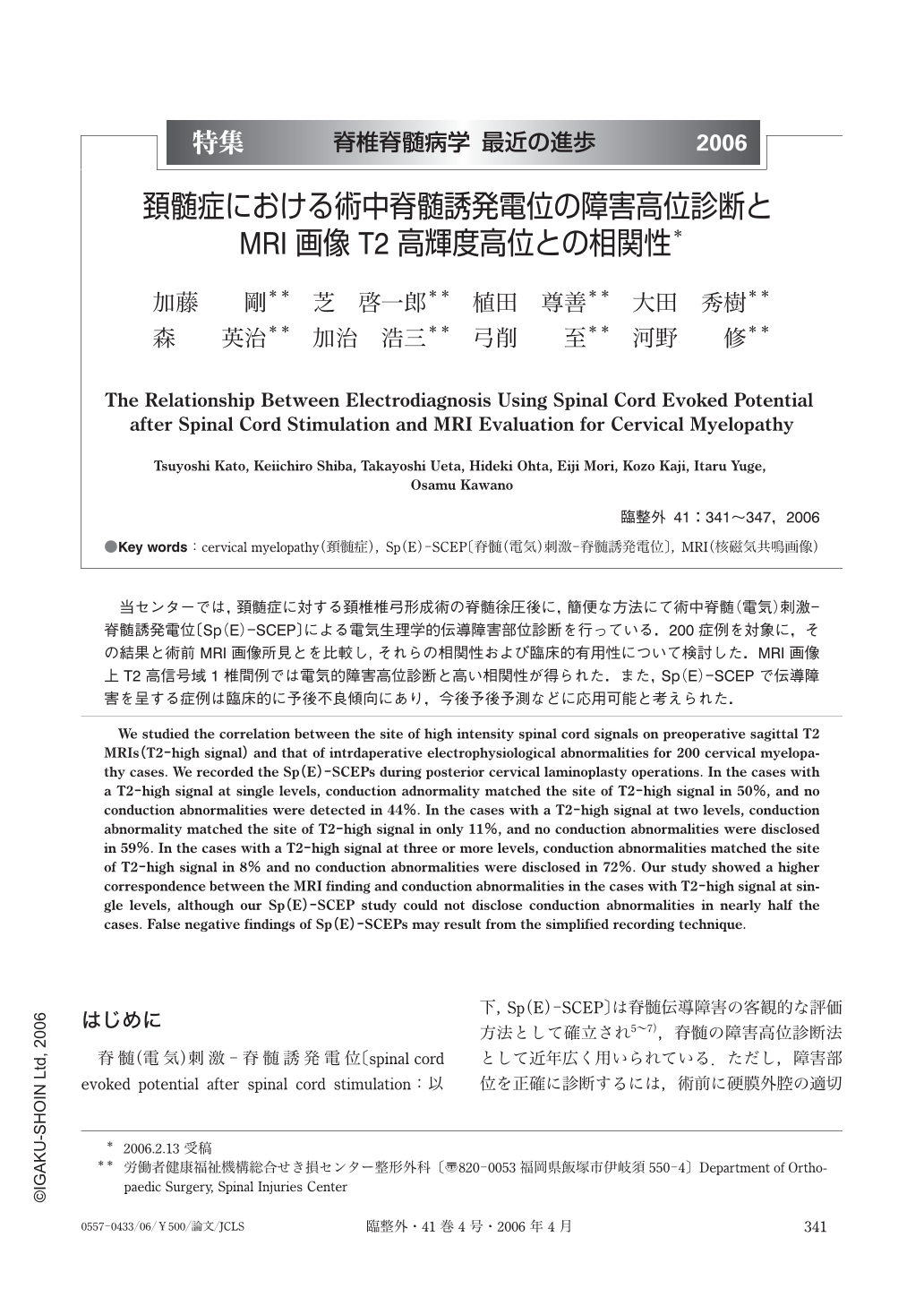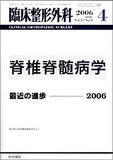Japanese
English
- 有料閲覧
- Abstract 文献概要
- 1ページ目 Look Inside
- 参考文献 Reference
当センターでは,頚髄症に対する頚椎椎弓形成術の脊髄徐圧後に,簡便な方法にて術中脊髄(電気)刺激-脊髄誘発電位〔Sp(E)-SCEP〕による電気生理学的伝導障害部位診断を行っている.200症例を対象に,その結果と術前MRI画像所見とを比較し,それらの相関性および臨床的有用性について検討した.MRI画像上T2高信号域1椎間例では電気的障害高位診断と高い相関性が得られた.また,Sp(E)-SCEPで伝導障害を呈する症例は臨床的に予後不良傾向にあり,今後予後予測などに応用可能と考えられた.
We studied the correlation between the site of high intensity spinal cord signals on preoperative sagittal T2 MRIs (T2-high signal) and that of intrdaperative electrophysiological abnormalities for 200 cervical myelopathy cases. We recorded the Sp(E)-SCEPs during posterior cervical laminoplasty operations. In the cases with a T2-high signal at single levels, conduction adnormality matched the site of T2-high signal in 50%, and no conduction abnormalities were detected in 44%. In the cases with a T2-high signal at two levels, conduction abnormality matched the site of T2-high signal in only 11%, and no conduction abnormalities were disclosed in 59%. In the cases with a T2-high signal at three or more levels, conduction abnormalities matched the site of T2-high signal in 8% and no conduction abnormalities were disclosed in 72%. Our study showed a higher correspondence between the MRI finding and conduction abnormalities in the cases with T2-high signal at single levels, although our Sp(E)-SCEP study could not disclose conduction abnormalities in nearly half the cases. False negative findings of Sp(E)-SCEPs may result from the simplified recording technique.

Copyright © 2006, Igaku-Shoin Ltd. All rights reserved.


